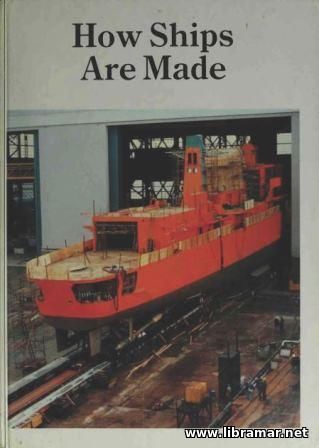 If you happen to visit any of the great marine ports of the world, for example Sydney or Singapore, or San Francisco, you will surely get be surprised by the huge number of ships of different types and sizes. They are moored alongside, anchored in the vicinity or just passing by through the bay leading to the open sea.
They will include oil and product tankers, passenger liners and dry cargo ships, container carriers and ferries, fishing boats and yachts, and so many others. You will count hundreds of ships since the demands of the modern trade are remarkably diverse nowadays.
This book was written for the newcomers to shipping industry willing to get a general understanding of the shipbuilding process. The way material is presented makes it easy reading even for the people with little to no technical knowledge available. The author starts the book with the explanation of the differences between ship types and some brief information about the ship design and construction process, with particular attention paid to the so-called CAD, standing for the computer assisted design.
The shipbuilding process is explained at every stage, from steel preparation to the launching of the ready ship and put fitting. The sea trials normally conducted upon completion of the ship construction, have been addressed in a separate chapter. The book features a glossary of terminology and is full of brilliant pictures.
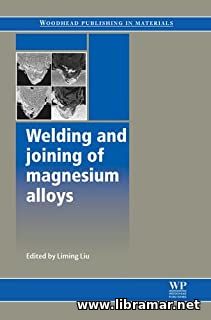 The publication is a good reference source and it will be very useful for all those involved in welding the magnesium alloys. Apart from them, it will be also appreciated by the researchers in the field as well as metallurgists. The content will provide them with a detailed analysis and review of the technologies for welding the subject alloys.
It will also give valuable information about the technical characteristics of the procedures, practical applications and associated limitations; note that it covers both newly introduced procedures as well as those with already proven effectiveness. The weldability of the alloys has been covered in detail, and the technologies commonly used for joining them have been duly explored.
Several chapters of the book address the new welding methods, including the laser welding. The author has equally covered the welding of the magnesium alloys to steel and to aluminum alloys, together with the protection of the newly established weld seams from corrosion.
Written by the professor of technology, the publication will give you the theoretical knowledge and the practical information you would need in order to produce high-quality welding with the magnesium alloys involved.
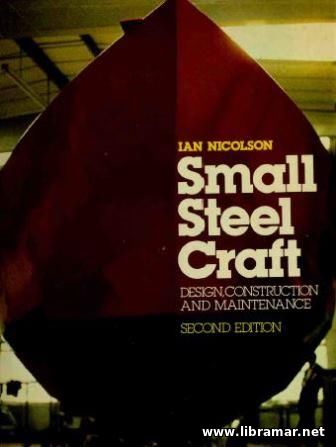 Have a look into this second, thoroughly revised and updated edition of the popular Small Steel Craft publication by Ian Nicolson. The publication is covering all important aspects of the small craft construction and building, as well as the repair and rebuilding. The author provides clear and easy-to-understand explanations of the design features considered unique to the craft made of steel materials.
Note that both the steel and different alloys have been addressed, together with their properties and application. The readers will get to know what and how shall be done in order to avoid too complicated methods of work that would consume too much of valuable time. There are also numerous tips on the optimization of the construction process, such as minimizing the number of different sizes of the steel plates and parts.
The chapters of the volume cover the entire process of small steel craft building, with the due attention paid to every single part of the craft, from the keel to the superstructure, shipboard machinery and equipment, and up to and including the fittings. The maintenance of the steel hulls is also explained together with the painting and preservation instructions.
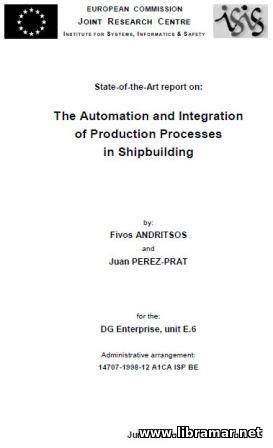 The maritime shipping industry has always been of critical importance for the whole Europe, and it still is considered strategically vital to the European economy, as well as the tradition and topology, and of course tradition. Throughout the history, the shipbuilding has been treated as a significant source of employment for the people. Nowadays, shipbuilding together with the related areas, need to go through the serious changes, in order to remain competitive.
The subject changes would include, first of all, the reduction of the lead times, commonly caused by the production over-capacity and competition. It would also be necessary to achieve sustainability throughout the entire process of ship construction. In addition, the highest standards of quality shall be complied with to provide safety and environmental friendliness of the maritime navigation.
All above goals are difficult but possible to achieve but will definitely require improvements in the design and construction of the merchant fleet, as well as its subsequent technical maintenance. The newly introduced technological advances, applied to the shipbuilding industry through, for instance, the laser welding of the ship’s hull, the growing level of automation of all processes, when used properly, will eventually result in the better productivity.
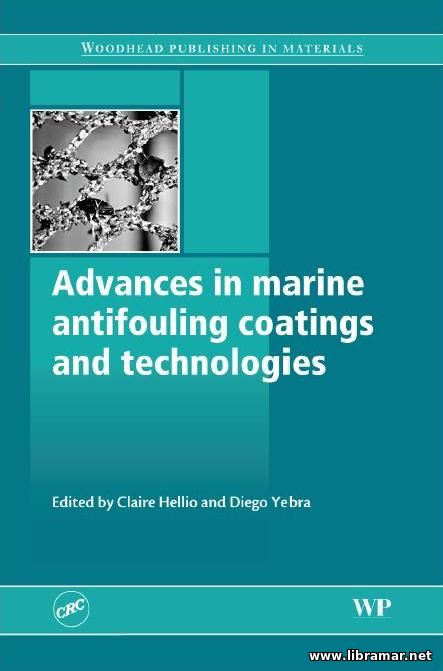 It is well known from the marine history that from the first steps done in the navigation, the marine fouling, i.e. growth of various aquatic organisms on the ships underwater parts was always treated as a very serious problem. This book is aimed to address some key aspects of the technologies of development and application of the anti-fouling coatings intended to protect the ships hull.
The following aspects are covered in this volume: Marine fouling organisms, their impact on the hull, chemically active marine antifouling technologies, development of antifouling coatings and their testing, various surface approaches to the control of marine bio-fouling. The content of the book reflects the result of the authors to make a summary of the researches in the field and their practical implications. The material presented in the book has been compiled using the valuable contributions provided by the international experts and editors.
As a result, this standard reference volume will be very useful for the manufacturers of the AFS, maritime industry, participants of the oil and gas industry, as well as of any other industry using different offshore structures, plus the researchers and scientists. The book provides the assessment of the marine anti-fouling organisms and the impact they may have, discussion of the major developments and examination of the new surface approaches, plus the review of the environmentally-friendly alternatives...
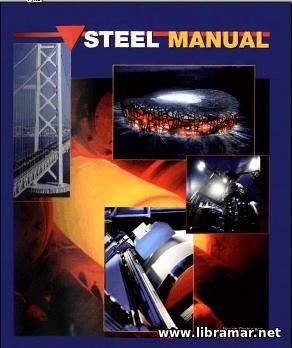 This book has been intended to serve as a valuable training manual and provides the thorough guidance on the steel to everyone involved in construction, including shipbuilding and repair industry. The readers have already named it a best introduction to steel production.
The book starts with the general information about the steel providing the fundamentals including the steel grades. This chapter is followed by the one devoted to the raw materials used for the iron and steel production, while in the next chapter the process of making steel from the ore is described. The fourth chapter is dealing with the reduction of iron ores while the fifth chapter addresses the steel casting processes.
The remaining part of the manual focuses on the iron and steel castings, forming of the steel, materials and quality management, plant management, applications of the steels and so many other issues. Such coverage of topics has made this manual very popular among the engineers of different industries, i.e. all those using steel or any steel products. Taking into consideration how widely steel is used in shipbuilding and repair, the usefulness and importance of such manual for the shipyard personnel, practicing engineers and students is clearly obvious.
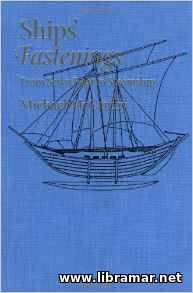 The ship hull fastenings are obviously critically important construction element of any vessel and boat, without which none of them could ever sail. This publication provides in fact the first detailed study of the ships fastenings. The author offers his readers a thorough and fascinating descriptions of a wide range of vessels starting from the ancient sewn plank boats and up to the steam ships and ocean clippers.
Apart from the technical information, the author also provides a good and interesting historical insight telling us about the major innovations and discoveries that accompanied the invention of the new fastenings and changes to the existing methods of securing. He has covered the metallurgy and copper sheathing, all types of rivets, welding, covering both the obsolete and relatively modern techniques, and even managed to address the development of the maritime insurance and underwriting, taking into account that the registries maintained by Lloyd's and other similar entities used to dictate the methods and forms of fastening to be used.
The publication has already proven of value for the professional shipbuilders as well as naval historians and archaeologists - note that the content will also be interesting to the amateur boatbuilders and enthusiasts.
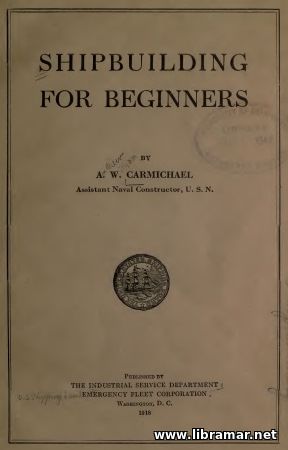 The present training booklet was designed and published to be for used by workmen who are involved in construction of the vessels contracted for by the United States Shipping Board, with the confident expectation that it would be of value to them.
Though published of almost one century ago, it is now classic and still actual source of information as the publication provides good explanation of the material contained in very clear and easy to follow and understand language.
The authors have supplemented the text of the booklet with numerous helpful and informative data diagrams. though originally published so many years and even decades ago, the booklet is still very useful for the newcomers to the shipbuilding industry willing to understand the very basics of it without going too deep into technical details which they may study at the later stages of their professional education.
Even for the general readers, i.e. people well far from the ship construction industry this booklet will for sure be of some interest since it will give them a general idea of shipbuilding. In fact, we would recommend to download the document, get it printed and keep readily available for anyone showing interest.
|







